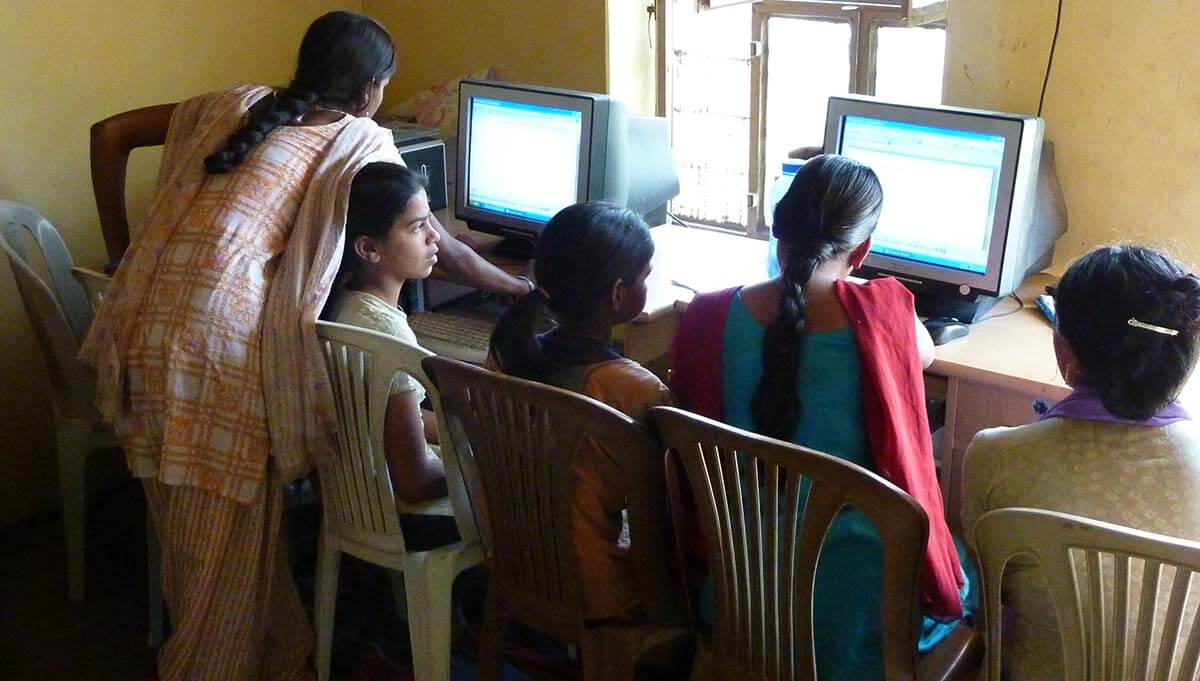To mark the launch of our Women’s Rights Online research, this series of guest blogs features on-the-ground perspectives from each of our research partners around the world. In this post, Anita Gurumurthy and Nandini Chami of IT for Change look at India’s Women’s Rights Online study results and how we need to turn Internet access into true empowerment for India’s marginalised women.
Let’s start with the good news: our survey conducted as part of the Women’s Rights Online project found that the connectivity gap between women and men is shrinking. Paradoxically, 49% of men and 59% of women interviewed had access to a smart phone, either private or shared. And 43% of men and 46% of women reported that they used the Internet. This is unmistakable evidence of market mechanisms enabling women (and men) at the bottom of the pyramid, to become ‘connected’.
So, does this mean that the gender digital divide is just fiction? Or that the Internet is a great equaliser of socioeconomic status? Not exactly. The study results also reveal that students and younger individuals are more likely to use the Internet than older groups. Other studies have revealed the existence of an urban-rural divide and a divide in access according to income.
And our study forces us to look beyond just access to see whether women are getting as much out of their use of the Internet as their male counterparts. Here, the study suggests that for the urban poor in India in general – and women in particular – the Internet may not be truly transforming their lives.
The study shows that 96% of male and 98% of female Internet users surveyed were on Facebook. However, for many female users, the Internet experience seems to largely be passive, and constrained to Facebook’s “walled garden”. Consumption of social media seems to be a similar experience to watching TV or listening to the radio. Women are not defining the Internet for themselves, they are simply absorbing what they are shown.
Consider this: 51% of female Facebook users have never followed a link outside Facebook, as against 29% of male users. It was not clear if the users surveyed in this study were subscribed to zero services or data plans that come preloaded with certain applications like Facebook. However, recent research in the Asian region undertaken by LIRNE Asia, uncovers an interesting phenomenon – many Facebook users have no idea that they are using the Internet!
For the majority of women and men, Facebook and other social networking sites seem to primarily be a space for connecting with their friends and family – with 88% men and 92% women Internet users surveyed reporting this. But, going by the data, this may not imply an expansion of networks of support. Only 3% of male and 1% of female social media users reported that social media has helped them forge networks of support. What this indicates is that the urban poor, who lack cultural and social capital, are not able to leverage the Internet opportunity for expanding their offline social networks in a way that improves their opportunities.
Only 17% of female and 28% male Internet users report that they actively seek information online on critical information such as rights, on health, public services or development projects. This proportion is very small, especially when we consider that 49% of female and 71% of male users report having followed links outside Facebook, which reveals some exposure to the wider Internet.
A good example of this is use of the Internet for improving economic opportunities. Among male social media users surveyed, only 12% reported that social networking has helped them to find a job or increase meaningfully their incomes. For women, this number constitutes only 4% of social media users surveyed.
Certainly, getting connected is about exploration, play and self discovery. However, the disruptive potential of the Internet depends very much on making the Internet an instrument for transformation. The results of our survey in India show that this needs much more than quick-fix solutions such as Free Basics. While this service may help in adding to the numbers connected, it will not enable the inclusion of the disadvantaged into the full benefits of of being connected to everything the Internet has to offer, and being able to use it as a tool rather than as just another medium for consuming pre-selected information and entertainment.
Technology is powerful. But it must be accompanied by skills and confidence for women to use it as a tool for empowerment. India’s gender gap online can only be truly closed when being connected bridges the gap in opportunities, giving women real choices to renegotiate their social status.
For this to happen, we need policy frameworks that are citizen-centric rather than technology-centric. What is imperative from a policy standpoint is investment in gender-sensitive public access points that combine access to public information and services with meaningful digital literacy programmes for marginalised women. Our work at IT for Change has focused on demonstrating such alternative models. The government must revisit its vision of a ‘Digital India’, recognising the need for maintaining continuities with older claims and struggles of poor women, and not be tempted to declare job done through apps that only offer a small part of what the Internet can do for our country.
If you enjoyed this blog, take a look at submissions from our other country partners from around the world and sign up to our newsletter or follow #WomensRightsOnline @webfoundation on Twitter for updates on the research.
